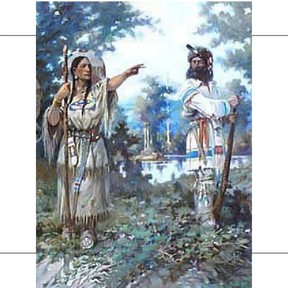
Lewis & Clark: The Journey Continues
I can describe the continuation of the expedition of Lewis and Clark from Septem



8,000 schools use Gynzy
92,000 teachers use Gynzy
1,600,000 students use Gynzy
General
This is the third lesson in a series of lessons about Lewis and Clark. In this lesson, your students will review what they have learned so far about the expedition of Lewis and Clark. Next, discuss the winter of 1805, as the crew hunkered down at Fort Mandan. The material covers when Lewis and Clark met Sacagawea, their encounters with Grizzly Bears and reaching the Great Falls of The Missouri River.
Learning Objective
Students will be able to describe the continuation of the expedition of Lewis and Clark from September 1804 - June 1805.
Introduction
To start the next lesson of Lewis and Clark, the students will review what they have learned so far about the expedition. Next, the class will engage in a quick memory refresher activity by putting events in the correct order. Discuss the building of Fort Mandan during the fall of 1804 and all about how the Corps of Discovery waited out the winter here while the Missouri River was frozen. Students will then have an opportunity to write their own journal entries as if they were camping at Fort Mandan, just as Louis and Clark did.
Instruction
Explain how Lewis and Clark met a Shoshone woman named Sacagawea and how she and her husband were invited as interpreters/guides to join the expedition. Discuss the birth of a son to the couple who was named Jean Baptiste. Students will then learn about the expedition’s encounters with Grizzly Bears and The Great Falls of Montana.
Quiz
Students respond to ten multiple-choice and true/false questions.
Closing
Close the lesson with a crossword activity in which the students will practice what they have learned from the lesson.
The online teaching platform for interactive whiteboards and displays in schools
Save time building lessons
Manage the classroom more efficiently
Increase student engagement
Discover more!
About Gynzy
Gynzy is an online teaching platform for interactive whiteboards and displays in schools.
With a focus on elementary education, Gynzy’s Whiteboard, digital tools, and activities make it easy for teachers to save time building lessons, increase student engagement, and make classroom management more efficient.



